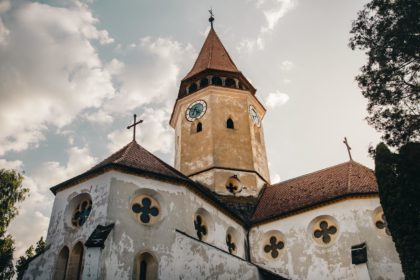
Surroundings | Bârsei Land
Bârsei Land
Other names: Depression of Brasov or Depression of the Carpathian Curvature
Bârsei Land – In German Burzenland is a historical and ethnographic region in south-eastern Transylvania, situated at about 550 m above sea level. The name Bârsa comes from one of the main water courses, the Bârsa river which flows into the Olt river.
From Bîrsa, the name of the region whose capital is Brașov, both names probably having the same origin of the derivative bîrsan (bârsană) indicating long and rough wool (țurcană).
The region has been inhabited since ancient times, and in 1211 it was donated to the Teutotni Knights by King Andrei I of Hungary to guard the south-eastern borders of the Kingdom of Hungary against the Cumans. Here the Teutons built castles and brought settlers from the Roman Empire to populate the territory.
In 1224 the knights tried to break out of the alliance with the Hungarians and King Andrew evacuated the order 1 year later, so the Teutons left the area heading for Prussia and the German settlers stayed here until the 20th century, setting up the strongest districts, militarily and economically.
Thus, in 1918, with the Great Union of 1918, Țara Bârsei became part of Romania.
More details
Geographically, the region is crossed by numerous rivers including the Oltul, Bârsa, Ghimbășel and many others. Also, many mountains rise above these lands such as the Great Postăvaru Peak (1802m) and the Tâmpa Peak (900m) but Țara Bârsei remains a depression with average altitudes of 400-500m.
Thanks to this attractive geographical position, the fauna and flora are very well developed, including rare plant species such as daria, clover, honeysuckle, yellow wagtail, mountain bulbuls, brown bear, Carpathian deer, roe deer, wolf, wild boar, wild cats and many others.
There are many legends that surround Țara Bârsei, this small fortress between the mountains where the paths of history and civilisations have merged. Solomon’s Stones designate a sacrificial site where the Hungarian King Solomon is said to have plunged into the ravine towards the gorge and his enemies fell after him.
The Temple of the Ursitelor is a magical and mysterious place that harbours many energies perhaps from the afterlife, all who visit this place bear witness to feelings they have never experienced. Last but not least, there is said to have been a huge cave filled with water under the Tampa.
Of course, all these are just legends, it is up to visitors to see for themselves.
In Țara Bârsei you can visit the following sights: Valea Cetății Cave, Bran Castle, Șinca Veche Monastery, Feldioara, Hărman, Râșnov and Prejmer Fortresses, Șirnea village, Săcele town or Codlea municipality.















